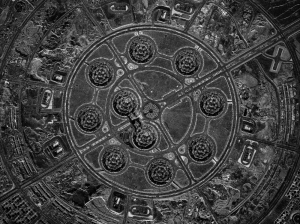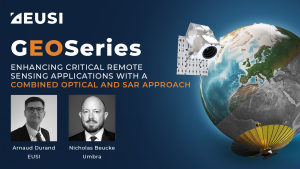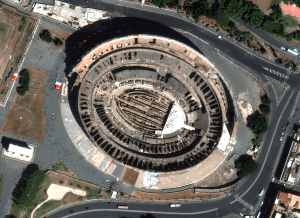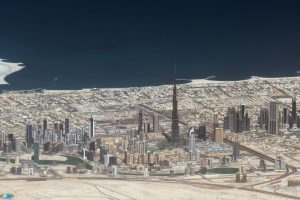WorldView-4 Increases European Space Imaging’s Satellite Tasking Capacity
- European Space Imaging
- 4 September, 2017
The world’s highest resolution satellite constellation has doubled in it’s 30 cm capacity.
On November 11, 2016, the WorldView-4 satellite was launched into space as part of the DigitalGlobe constellation. It is a state-of-the-art very high resolution earth observation machine, capturing 30 cm imagery from an orbit 617 km away from Earth. European Space Imaging was the first organization in the world able to commercially task WorldView-4, which immediately increased its capacity for collecting the highest resolution satellite imagery available. Combined with the only other 30 cm-capable satellite in orbit, WorldView-3, the fleet is now able to capture over 1.3 million km2 of 30 cm imagery daily.
The very high resolution imagery captured by WorldView-4 is uploaded to European Space Imaging’s archive image library, available as a searchable online database. However customers can also request collection of the specific images they need via the service of direct satellite tasking. Flexibility, speed, and personalized customer service characterize the company’s approach to image collection.
From its recently updated ground station in Munich, European Space Imaging staff monitor the near-real-time weather situation while they plan satellite movements, enabling them to gather images with the least cloud cover possible. This allows them to provide customers with the highest quality imagery as soon as possible – ideal for time-sensitive situations such as during an emergency response, or when plotting the optimal maritime navigation route.
“Last-minute tasking allows us to make changes to the collection plan up until the moment of communication with the satellites,” said Adrian Zevenbergen, Managing Director of European Space Imaging. “When you compare this to operations that don’t take the weather into account, we are able to double the collection of good images.”
European Space Imaging has access to the most advanced satellite constellation in orbit and the most sophisticated collection process on the planet, enabling it to make any Earth Observation project a rapid success.
Related Stories

What is SAR Imagery? Introduction to Synthetic Aperture Radar
SAR imagery enables all-weather monitoring, penetrates dry soil, and offers resolution as high as 25 cm. Thanks to that, it’s invaluable for applications like emergency response, defence and intelligence, or agriculture. How does SAR work? What are its advantages and limitations? And what other data sources can you integrate it with? Read the article to learn more.

Enhancing Critical Applications With A Combined Optical and SAR Approach
For the first time in history, users can schedule synchronised collections of 25 cm SAR and 30 cm Near Real-Time optical imagery to mitigate weather and gain deeper insights of events unfolding on the ground. This is especially valuable for Emergency Response, GEOINT and other applications.

18 European Landmarks in Satellite Images
Satellite sensors captured unique architecture, breathtaking nature and centuries of history. Explore the Colloseum, La Sagrada Familia, the Leaning Tower of Pisa, and other landmarks.

Understanding ONA in Satellite Imagery: What is Off Nadir Angle and What Is It Used For?
Off Nadir Angle (ONA) plays a crucial role in the quality of optical satellite imagery. It influences its resolution and clarity, decides the visibility of features, and makes it easier or harder to identify objects. Moreover, ONA is used to create stereo imagery and 3D models of the Earth’s surface. Read on to learn more.





